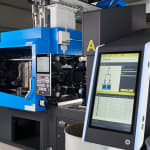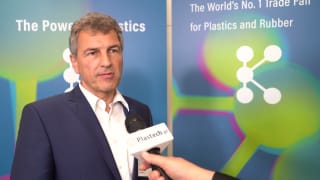
Sumitomo (SHI) Demag will place liquid silicone rubber processing at the center of its K 2025 presentation, showing how coordinated machine, tooling, dosing and automation can raise stability and repeatability in electric production cells. The company cites ongoing investments in LSR manufacturing and broader deployment of all-electric technologies as drivers of adoption across industrial applications. It also notes that more OEMs are bringing LSR production in-house to reduce lead times, scale output and simplify supply chains. Responding to these trends, the three IntElect 130t exhibits are configured as ready-to-manufacture packages. Each IntElect LSR machine features a standardised LSR kit comprising a dedicated screw, non-return valve, vacuum pump and toggle technology. These elements target cleanliness and precise shot control for LSR processing, with appropriate temperature control integrated as part of the system approach. According to LSR specialist Jens Dickel, collaboration with tooling, dosing, automation and material partners underpins this approach. He comments: "This is where the mutual trust shared between specialist LSR partners leads to better outcomes for customers. Each are experts in their respective fields, including LSR tooling, dosing, automation and material specialists."

All IntElect LSR machines include a standardised LSR-kit
LSR synergy without compromise
On the main Sumitomo (SHI) Demag display in Hall 15, Booth D22, a compact IntElect 130t production cell integrates a 3-plate 32-cavity mould, an end-of-arm tool and a Timeshot cold deck from Nexus. The cell is configured for tight-tolerance automotive safety applications, producing sealing frames for high voltage charging plugs. The parts are moulded using Momentive LSR 2040 in a pre-coloured blue formulation.
The Nexus X200 dosing system with USD colour pump is fully integrated, providing processing control and compliance with the OPC UA 40082-3 standard. Every 26 seconds, the IntElect delivers a 42 gram shot of pre-blended LSR, with the Nexus Timeshot ensuring balanced filling across all 32 cavities. A customised Nexus end effector on a Sumitomo (SHI) Demag SAM-C three-axis linear robot demoulds each shot and places components either on a conveyor for downstream operations or into a plexiglass silo to protect against contamination. Parts can then be sorted manually or automatically for inspection.

On the main booth, the production of sealing frames for high voltage charging plugs will be displayed.
24-hour autonomous medical production
A second IntElect 130t LSR machine features on the modular Nexus exhibit in Hall 12, B53, manufacturing medical valves with a high level of automation. The system combines robotics, precise slitting technology, optional camera inspection and traceable packaging to enable round-the-clock autonomous production.
With a total cycle time of 40 seconds per shot, a six-axis robot removes 16 parts from the mould and transfers them to a slitting station. The robot holds the parts in position while electric-driven slitting knives make the cut. The next moulding cycle occurs in parallel, with the EOAT shuttling between the 16-cavity mould and the slitting station. Automated vision inspection can verify slit accuracy and outer diameter. After successful inspection, the robot places the 16 parts into a dedicated SLC compartment box, ensuring part traceability.
For unattended operation, a tiered overhead buffer stores up to five SLCs, eliminating manual intervention for up to 24 hours. A drawer within the cell separates component samples for laboratory testing, and another drawer diverts start-up parts or special batches from regular production. On-demand flow-pack packaging can be integrated, enabling each shot to be packaged, labelled and discharged using the quality control drawer.
Electric-driven dosing reduces downtime
Applying its LSR dosing experience, Kracht presents the SilcoStar E-Drive series on the third IntElect electric moulding machine in Hall 11, E48. Designed for LSR dosing, the unit provides high output of up to 10 l/m, fast material changes using a dual 200 L barrel exchange, and a fully enclosed design for safety and cleanliness. Kracht states that the servo-electric linear drive is suitable for cleanroom use and offers a service life up to ten times longer than dosing systems using conventional ball screw drives.
To keep colour ratios accurate without manual recalibration, integrated control adapts dynamically to match flow rates. The E-Drive quick-clean mixing head reduces downtime, with cleaning averaging five minutes according to Kracht. Equipped with a 256-cavity Rico mould, the IntElect LSR package produces 15,4-gram single wire seals in a cycle time below 12 seconds. Despite the high throughput, the machine’s energy consumption remains among the lowest in its class, reports Dickel.
All three LSR exhibits support the OPC UA interface, linking metering measurement data directly with IntElect processing data to provide a traceable and stable production process.
Press briefing
Anatol Sattel, together with Martin Pütz, will present a press briefing on Thursday, October 9th, at 10:30 am.




